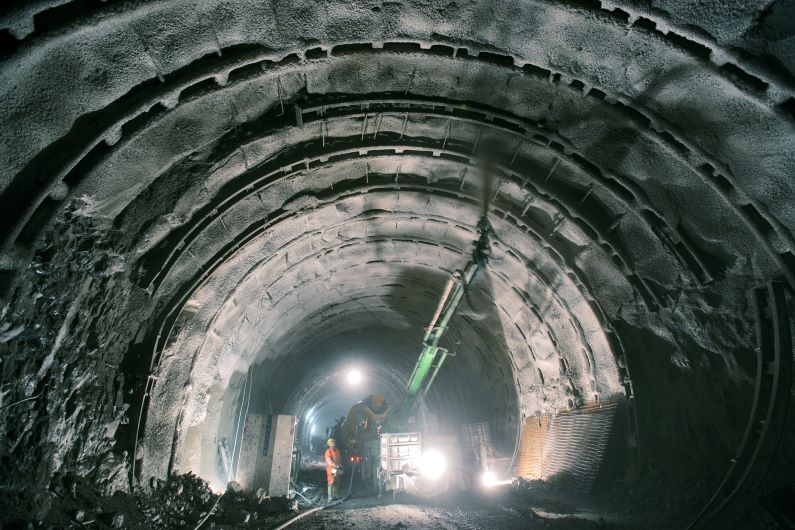The entire construction industry benefits when its participants, whether big or small, improve their operations and particularly their focus on safety.
Prevailing misconceptions about the importance and benefits of adhering to occupational health and safety (OHS) standards unfortunately hinder many companies, and especially SMEs, from attaining stable growth.
Roelof van den Berg, CEO of the Gap Infrastructure Corporation (GIC), comments: “Every company’s most valuable asset is its workforce. Its workforce also represents its greatest risk factor. As a result, while health and safety regulations were originally implemented to ensure construction workers no longer have to work in unsafe environments, the industry has since evolved and now embraces a culture of health and safety which benefits both employee and employer.”
Construction has the highest OHS compliance rate compared to the agriculture, chemical, iron and steel, manufacturing, and wholesale and retail sectors. This is due in large part to its emphasis on advanced employee-focused workplace protocols.
“It is generally accepted that the industry standard for health and safety regulation compliance is around 80%. At GIC, we strive for 100% in terms of compliance, understanding the advantages of these standards for employees, as well as for construction companies and their clients.”
Yet regardless of the many advantages of improved adherence to health and safety regulations, a few misconceptions regarding these regulations persist. These prevent companies from realising their true growth potential – especially smaller businesses struggling to find a foothold in the industry and become profitable.
OHS myths limiting business growth
One common misconception suggests that strict adherence to health and safety regulations hinders productivity and efficiency, and slows project completion. But in reality, these regulations exist to safeguard construction workers from potential harm which would otherwise result in considerable lost time, high medical costs, insurance costs, and potential equipment damage for businesses, explains van den Berg.
Another misconception is that regulations exclusively apply to large-scale construction projects, and that only larger companies with many employees need to comply with them. However, South Africa’s Occupational Health and Safety Act, regulated by the Department of Labour, applies to every participant in the construction industry, and smaller businesses can also benefit substantially from compliance.
“When businesses prioritise health and safety and adhere to regulations, they demonstrate a commitment towards their employees’ well-being. This commitment creates a working environment where employees feel valued, supported, and confident in their own capabilities, leading to increased morale and productivity,” says van den Berg.
Some construction workers and employers also believe that accidents, injuries, and lost time is an unavoidable risk inherent to construction work. However, many incidents can be prevented by adhering to established safety procedures and general guidelines that have been carefully crafted and enhanced over the years to specifically lower these risks.
Investing in safety training, conducting regular inspections, and identifying potential hazards significantly reduces the potential for accidents and damage to property. Moreover, a company-wide proactive mindset encourages employees to become more aware and sensitive to potential workplace hazards, enabling them to perform their duties with a stronger sense of security.
Lastly, van den Berg makes note of an alarming trend among smaller construction businesses concerning the expenses involved in implementing strict safety regulations.
“A common objection against health and safety compliance is that it’s prohibitively expensive and simply not worth the investment,” he says. “But it’s first vital to consider the potential impact and threat to employees, remembering that their safety is ultimately paramount. People should always come first.
“Additionally, consider that the costs associated with injuries on the job site far surpass the expenses associated with implementing a proper safety strategy.”
Beyond the associated medical costs, legal consequences, and project delays, workplace accidents have a devastating effect on morale. These spark unnecessary fear towards completing everyday tasks, and could lead to far-reaching reputational damage which may result in diminishing contract opportunities.
As a result, GIC has invested in and seeks to implement latest technology on its sites to improve safety standards. These include iOt devices to proactively monitor weather conditions and equipment; onsite CCTV systems to check and monitor that safety guidelines are being followed; and Near Field Communication (NFC) stickers that can provide digital manuals and enable experts to track important items.
The company is even in the process of investigating new exoskeletons for workers to assist them in picking up heavy objects and moving around sites while placing less strain on their bodies.
“Ultimately, a conventional and comprehensive OHS strategy is not only necessary for ongoing project success and employee security – it’s also a solid blueprint for economic success. Businesses that thrive in this highly competitive industry are the ones that place an emphasis on safety,” concludes van den Berg.
More news
- PART 2: CONCRETE IN THE DESIGN OF A UNIQUE LUXURY HOME IN GEORGE, SOUTH AFRICA
- PART 1: CONCRETE IN THE DESIGN OF A UNIQUE LUXURY HOME IN GEORGE, SOUTH AFRICA
- MVULE GARDENS, AFRICA’S LARGEST 3D-PRINTED AFFORDABLE HOUSING PROJECT
- PART 3: HARNESSING THE POTENTIAL OF HIGH SULPHUR FLY ASH IN CONCRETE PRODUCTION
- PART 2: HARNESSING THE POTENTIAL OF HIGH SULPHUR FLY ASH IN CONCRETE PRODUCTION





